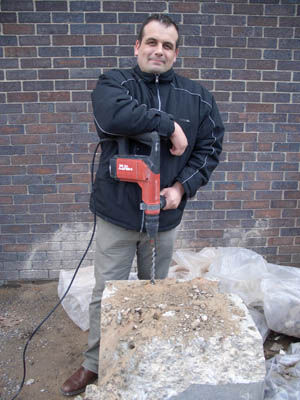University News Last updated 25 February 2011

CBIE’s David Edwards is pleased to announce his position as an academic representative on a prestigious HSE noise and vibration panel which aims to raise awareness and reduce the risks of Noise Induced Hearing Loss (NIHL) and Hand-Arm Vibration Syndrome (HAVS) in the workplace.
The Noise and Hand-Arm Vibration Programme led by the Health and Safety Executive (HSE’)s Noise & Vibration Policy Unit, is a new initiative designed to develop greater stakeholder engagement with key partners across industry sectors Energy, Extraction, Manufacturing and Construction, identified by the Labour Force Survey (LFS), where NIHL and HAVS poses a risk to the health and safety of workers.
The group seeks to gather and share knowledge and experience in good practice and promote awareness and changes in behaviours and attitudes towards health and safety in the workplace. Main objectives for the partnership group’s consideration include:
-
Focusing on the key messages
-
Finding the occupations most at risk
-
Exploring the measures which will best address the requirement for changed attitudes and behavior
-
Development of effective mechanisms for communicating key messages
On being appointed, David said
“It is both a pleasure and privilege to be working with the Health and Safety Executive (HSE) again on workplace hand-arm vibration and noise. After almost 10 years, my ‘first tier’ research into vibration emissions from hand held power tools undertaken in partnership with Professor Holt (also of CBIE) and Professor Neil Mansfield (Loughborough University), has encouraged many Original Equipment Manufacturers (OEMs) to revise their means of testing machinery from single axis data to tri-axis measurement. Leading on from this, the Hand-arm Vibration Test Centre (HAVTEC) database (found at www.operc.com) was established; and continues to grow as the only freely available international source of scientifically reliable and independent vibration data. I fully support the HSE’s new ‘second tier’ approach to effectively managing the risks posed to workers’ health. Unlike accident safety, where there is usually a ‘tangible’ and ‘immediate’ incident to report upon, poor-health issues that develop over time (such as white finger from hand-arm vibration exposure) tend to reside further back in industry’s conscience. Yet, the longer term damage posed by these risks can be extremely debilitating for the individual and costly for employers and society in general. The scientific community has a duty to proactively engage with, and support government bodies in this way and I am delighted that Birmingham City University academics are involved".
For more information on this project, please contact david.edwards@bcu.ac.uk